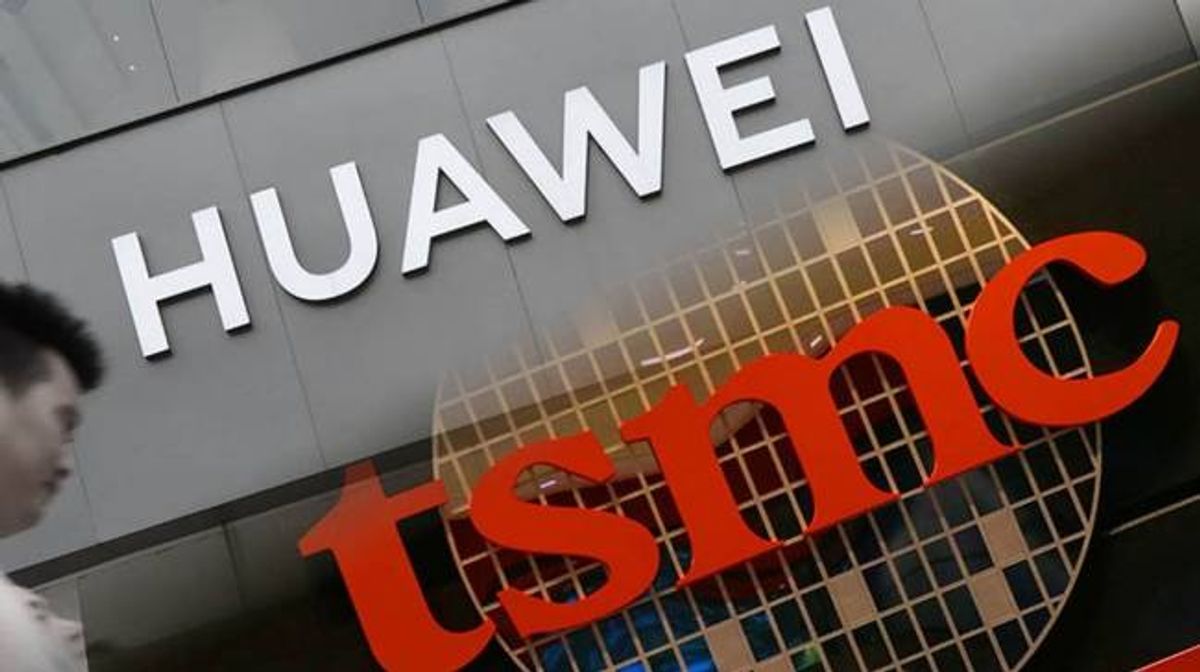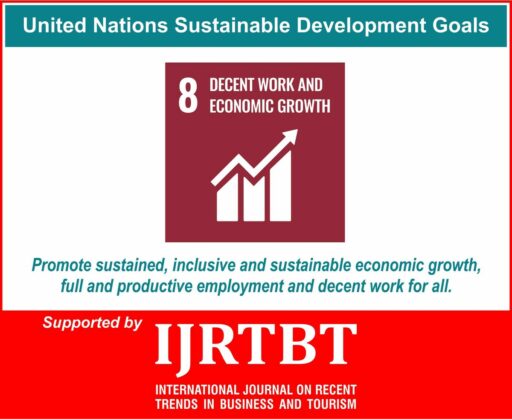Taiwan Semiconductor Manufacturing Company (TSMC) is a titan in the semiconductor industry, renowned for its advanced chip technologies and robust financial performance. Despite global market challenges, TSMC’s stock remains a beacon of potential for investors. This article delves into the company’s financial landscape, competitive positioning, and strategic opportunities, offering investors insights into the viability of TSMC as an investment choice.
Key Takeaways
- TSMC’s forward P/E ratio, below the sector’s median, coupled with its projected 20-25% EPS growth, positions it as an attractive investment in the semiconductor sector.
- Despite global market pessimism, investors maintain confidence in TSMC, buoyed by its financial resilience and technological leadership.
- With a $100 billion investment plan, TSMC demonstrates a long-term commitment to maintaining its competitive edge over rivals like Intel and Samsung.
- TSMC’s strategic investments, including its second US foundry, present both challenges and opportunities, with implications for its growth trajectory and investor sentiment.
- Foreign investment firms play a significant role in TSMC’s valuation, with the company’s stock being identified as undervalued, indicating a potential for future appreciation.
TSMC’s Financial Landscape and Investor Sentiment

Analyzing TSMC’s Forward P/E Ratio in the Semiconductor Sector
In the competitive landscape of semiconductor manufacturing, TSMC’s forward price-to-earnings (FWD P/E) ratio is a critical metric for investors. TSMC’s FWD P/E of 22.02 not only reflects its robust earnings potential but also signifies a discount compared to the sector’s median. This positions TSMC as a potentially undervalued player in the market, especially when considering its projected earnings growth rate.
TSMC’s stock valuation, when juxtaposed with its growth prospects, suggests a favorable entry point for investors. The company’s commitment to maintaining a leading edge in technology and production efficiency could translate into sustained long-term growth.
Here’s a quick comparison of TSMC’s FWD P/E ratio with the semiconductor sector’s median:
| Metric | TSMC | Semiconductor Sector Median |
|---|---|---|
| Forward P/E Ratio (FWD) | 22.02 | 24.53 |
The table above succinctly illustrates TSMC’s market position relative to its peers, highlighting the opportunity for investors to capitalize on the current valuation.
The Impact of Global Market Pessimism on TSMC Stock
In the face of global market pessimism, TSMC’s stock resilience has been a topic of interest among investors. Despite the broader tech sector experiencing downturns, TSMC has managed to maintain investor confidence to a certain extent. The company’s stock has notably held its ground above key price levels, even as other tech giants have seen their valuations slashed.
While some analysts have downgraded TSMC, citing over-optimism, the company itself forecasts significant revenue growth. This growth is expected to be driven by advancements in AI and the scaling of its N3 process node.
However, the sentiment is not uniformly positive. Recent reports indicate a period of ‘negative growth’ for TSMC, the first in over a decade, raising concerns about the company’s short-term prospects. Moreover, investment firms have adjusted their forecasts, signaling caution and suggesting that TSMC may not see a rebound for several months.
| Date | Event Description | TSMC Stock Reaction |
|---|---|---|
| 2020-03-26 | Global investors bullish despite market pessimism | Held above NT$300 |
| 2022-07-14 | Stocks hit a two-year low; revenue forecast adjusted | Plummeting |
| 2023-05-03 | ‘Negative growth’ announced; demand for 5nm/7nm falls | Expected to be shy |
Investor Confidence Amidst TSMC’s Growth and Capital Expenditure
TSMC’s commitment to growth and capital expenditure is evident in its recent financial maneuvers. The company has boldly adjusted its capital expenditure for the current year to a staggering US$30 billion, surpassing the total investment of the local Taiwanese government. This aggressive investment strategy is part of a larger plan to spend US$100 billion over the next three years, signaling a strong belief in the future of semiconductor technology and its own role within it.
Despite the challenges of ‘negative growth’ for the first time in 14 years, TSMC’s outlook remains optimistic. The company is not scaling back on its capital expenditure, which is a testament to its confidence in a swift recovery and sustained demand for its 5nm and 7nm products. This resilience is a key factor that continues to attract global investors, even amidst market pessimism and a bearish outlook for the tech sector.
TSMC’s Outlook Backs Hopes for Global Tech Recovery in 2024, suggesting a robust plan for capital spending and growth expectations.
The semiconductor giant’s stock has maintained a strong position, holding above NT$300 (US$10) per share, despite the broader market’s downturn. This has been buoyed by TSMC’s forward-looking P/E ratio, which remains attractive to investors, especially when compared to the sector’s median. With a projected EPS growth rate of 20-25% CAGR over the next two years, TSMC is poised to continue its trajectory of success.
TSMC’s Competitive Edge in the Semiconductor Industry

Outperforming Rivals with High Yield Rates and Advanced Technologies
TSMC’s ability to maintain high yield rates while advancing its technological prowess has been a cornerstone of its success. The company’s focus on innovation and efficiency has allowed it to outpace competitors like Samsung and Intel.
- TSMC’s high yield rates translate to more usable chips per wafer, a critical factor in cost and supply chain efficiency.
- Investment in advanced technologies ensures TSMC’s chips are at the forefront of the market, driving demand from high-end customers.
- The company’s agility in adapting to market changes has kept it ahead in the semiconductor race.
TSMC’s strategic positioning and operational excellence have not only secured its market leadership but also instilled a sense of reliability among its clientele. This reliability is a key driver in the company’s ability to secure long-term contracts and maintain a robust order book, even in uncertain market conditions.
The Significance of TSMC’s $100 Billion Investment Plan
TSMC’s commitment to a staggering $100 billion investment over the next three years is a bold statement of intent in the semiconductor industry. This capital expenditure plan, which includes an adjustment to $30 billion for the current year, surpasses the total investment of the local Taiwanese government. The strategic deployment of these funds is set to solidify TSMC’s leadership position and fuel its competitive edge.
The investment is not just about expanding existing facilities; it’s a multifaceted approach to scaling up production, advancing technology, and meeting the surging demand from major clients. For instance, TSMC has allocated $3 billion to boost the 28nm production capacity at its Nanjing fab, responding to the urgent needs of a significant customer.
With such a substantial investment, TSMC is not only preparing to meet the current market demands but also positioning itself to lead the future of semiconductor innovation.
The Arizona project is another critical component of TSMC’s investment strategy. Initially raising the investment to $40 billion, TSMC plans to produce cutting-edge 3-nanometer chips by 2026, transforming the Arizona desert into a high-tech oasis. This move underscores TSMC’s commitment to maintaining its technological supremacy and expanding its global footprint.
TSMC vs. Intel and Samsung: A Triumvirate of Technological Dominance
In the high-stakes game of semiconductor supremacy, TSMC, Intel, and Samsung are locked in a relentless pursuit of innovation. TSMC has consistently outpaced its rivals, leveraging its high yield rates and advanced process technologies to secure a dominant position in the market. The race to shrink chip sizes further exemplifies this competition, with all three giants aiming to produce 2-nm chips by 2025.
While TSMC and Samsung have already started producing 3-nm chips, Intel is currently at the 5-nm mark, striving to close the gap. This technological tug-of-war is not just about bragging rights; it’s a battle for the billions of dollars in revenue that come with being at the forefront of the industry.
TSMC’s strategic investments and technological advancements have positioned it as a leader, but the journey is far from over. The company must continue to innovate and invest to maintain its edge over Intel and Samsung.
The table below provides a snapshot of the current state of play among these semiconductor titans:
| Company | Current Chip Size | Target Chip Size | Target Year |
|---|---|---|---|
| TSMC | 3-nm | 2-nm | 2025 |
| Samsung | 3-nm | 2-nm | 2025 |
| Intel | 5-nm | 2-nm | 2025 |
As investors consider the future of TSMC stock, they must weigh the company’s ability to maintain its technological lead and the potential market shifts that could arise from the ongoing competition.
Challenges and Opportunities for TSMC

Navigating the ‘Negative Growth’ Phase for the First Time in 14 Years
For the first time in over a decade, TSMC is confronting a period of ‘negative growth,’ a situation that has prompted investors and analysts to closely scrutinize the company’s next moves. Despite the downturn in demand for its 5nm and 7nm products, TSMC remains steadfast, opting not to cut back on capital expenditure. This decision signals a commitment to long-term strategies over immediate market pressures.
TSMC’s resilience in the face of adversity is not without precedent. The company has historically demonstrated an ability to sustain growth even in challenging times. For instance, TSMC’s non-NVIDIA business is expected to remain robust, underscoring the company’s diversified strength.
While the forecast for 2023 revenue falls short of initial expectations, TSMC’s competitive position and strong financials continue to make it an attractive prospect for investors.
The following table outlines the recent adjustments in TSMC’s financial forecasts and the implications for investors:
| Date | Event | Impact on TSMC |
|---|---|---|
| 2023-07-14 | TSMC stocks hit a two-year low | Raised concerns among foreign investment firms |
| 2023-04-20 | Investor conference reveals demand drop | Led to a revised revenue forecast for 2023 |
| 2022-07-25 | TSMC president expresses optimism amid bear market | Suggests underlying confidence in long-term growth |
As TSMC navigates this uncharted territory, the company’s strategic choices will be pivotal in determining its trajectory through the semiconductor industry’s cyclical nature.
Assessing the Risks of TSMC’s Second US Foundry Investment
TSMC’s decision to expand its footprint in the United States by investing in a second foundry carries significant implications. The historical context of TSMC’s previous U.S. venture, which was deemed unsuccessful 26 years ago, raises concerns about the potential risks of this new investment.
While the company’s capital expenditure has soared to over US$30 billion, surpassing the total local government investment in Taiwan, the strategic move is not without its challenges. The following points outline key risks associated with TSMC’s U.S. foundry investment:
- Potential difficulties in maintaining the lead in advanced technologies while managing overseas operations.
- The risk of oversupply and double booking, as previously experienced with 28nm process chips.
- The uncertainty of market conditions, highlighted by TSMC’s stock value fluctuations and revised revenue forecasts.
The success of TSMC’s U.S. foundry investment hinges on navigating these risks effectively, ensuring that the expansion does not compromise the company’s technological leadership or financial stability.
Investors and industry analysts will be closely monitoring the progress of the U.S. facility, as well as the dynamics between TSMC and other semiconductor giants like Intel. The outcome of this venture will have far-reaching consequences for the global semiconductor industry.
The Potential Impact of Taiwan’s Chips Act on TSMC’s Future
The introduction of Taiwan’s own version of the CHIPS and Science Act, following the United States’ initiative, has sparked a debate on its potential effects on TSMC’s future. Critics are concerned that the act may not only fail to benefit TSMC but could also strain Taiwan’s financial resources. Despite the stringent criteria that may render TSMC ineligible for the act’s benefits, the company’s massive capital expenditure, exceeding US$30 billion this year alone, demonstrates its commitment to maintaining a competitive edge.
TSMC’s decision to invest in a second US foundry, tied to the 2022 Chips Act, represents a strategic move to secure its position in the global semiconductor market. However, there is an underlying risk, recalling TSMC’s first US investment 26 years ago, which did not meet expectations. The company must navigate these waters carefully to ensure that its most advanced technologies remain in Taiwan, while also expanding its global footprint.
The success of TSMC’s US expansion and the impact of Taiwan’s Chips Act will be pivotal in determining the company’s trajectory in the semiconductor industry.
Strategic Insights for Investors Considering TSMC Stock

Evaluating TSMC as an Undervalued Stock in the Tech Sector
In the realm of tech investments, TSMC stands out as a compelling value pick, backed by its solid financials and promising growth trajectory. Despite the market’s general pessimism, TSMC’s stock has demonstrated resilience, buoyed by its technological leadership and robust earnings growth.
With a forward P/E ratio that is notably below the sector’s median, TSMC presents an attractive valuation point for investors. The company’s projected EPS growth rate further bolsters the case for its stock being undervalued:
| Metric | TSMC | Sector Median |
|---|---|---|
| Forward P/E Ratio | 22.02 | 24.53 |
| Projected EPS Growth Rate (CAGR) | 20-25% | – |
TSMC’s consistent performance and strategic positioning in the semiconductor industry underscore its potential as an undervalued asset in the tech sector.
Given TSMC’s average earnings growth of around 23.6% and its rapid stock increase, investors may find the current valuation an opportune entry point. The company’s resilience in the face of market challenges suggests a robust foundation for future growth.
Understanding TSMC’s Revenue and Profit Growth Forecasts
TSMC’s financial trajectory remains a focal point for investors, particularly in light of its recent performance. The company’s forward-looking statements suggest a robust growth outlook, with a projected earnings per share (EPS) growth rate of 20-25% CAGR over the next two years. This is underpinned by TSMC’s strategic capital investments and its ability to maintain a competitive edge in the semiconductor industry.
Despite a challenging global economic environment, TSMC has managed to outperform expectations. For instance, the company beat profit and revenue expectations in the fourth quarter of 2023, signaling its resilience and operational efficiency. The table below summarizes TSMC’s recent financial performance:
| Quarter | Revenue (USD) | Net Profit (USD) | EPS (USD) |
|---|---|---|---|
| Q4 2023 | 12.91B | 5.6B | 0.69 |
Investors are closely monitoring TSMC’s capital expenditure, which has been adjusted to a staggering US$30 billion for the current year. This level of investment is indicative of TSMC’s commitment to innovation and its long-term strategic vision. The company’s expenditure plans are expected to further solidify its position as a leader in the semiconductor sector.
TSMC’s growth narrative is not without its challenges, but the company’s proactive approach to capital investment and technology development positions it well to navigate the market and continue delivering value to shareholders.
The Role of Foreign Investment Firms in TSMC’s Valuation Dynamics
Foreign investment firms play a pivotal role in shaping the valuation dynamics of TSMC stock. The political risk premia for Taiwan assets is likely to fade, as analysts like David Chao from Invesco Asset suggest, shifting the focus back to the company’s fundamentals. This sentiment is echoed in the market’s response to TSMC’s earnings beat, which saw a reversal in foreign flows and a renewed bullish outlook on the stock.
Despite recent market pessimism, TSMC’s robust capital expenditure and growth forecasts have kept investor confidence afloat. The company’s forward-thinking investment strategy, including the significant US$30 billion capital expenditure for the current year and a planned US$100 billion over the next three years, underscores its commitment to maintaining a competitive edge.
TSMC’s valuation is influenced not just by its financial performance but also by the broader geopolitical landscape and the strategic moves of foreign investors.
However, challenges remain as foreign investment firms have raised concerns over TSMC’s near-term prospects, with some predicting a six-month period before the company fully recovers its momentum. Investors are advised to closely monitor these developments as they may have substantial implications for TSM’s stock performance.
Conclusion
In the intricate dance of market dynamics, TSMC emerges as a semiconductor titan with a robust financial foundation and a promising growth trajectory. Despite the market’s occasional pessimism and the challenges posed by global events, TSMC’s stock has demonstrated resilience, buoyed by strategic capital expenditures and technological leadership that leaves competitors trailing. With a forward P/E ratio that undercuts the sector median and a projected EPS growth rate that signals robust potential, TSMC stands as a beacon for investors navigating the semiconductor landscape. While the future is never certain, TSMC’s past performance and strategic positioning suggest that its stock may well be a lighthouse guiding investors through the fog of market volatility towards potential gains.
Frequently Asked Questions
What makes TSMC an attractive investment opportunity?
TSMC’s forward price-to-earnings ratio is below its sector median, and it has a projected EPS growth rate of 20-25% CAGR over the next two years, indicating strong growth potential in the semiconductor sector.
Why are investors bullish on TSMC despite market pessimism?
Investors remain bullish on TSMC due to its solid financials, technological leadership, and the company’s ability to maintain share value even during global economic downturns such as the COVID-19 pandemic.
How does TSMC’s yield rate compare to competitors like Samsung?
TSMC outperforms rivals like Samsung with a high yield rate, which is a key factor in its success and contributes to its leading position in the semiconductor industry.
What is the significance of TSMC’s $100 billion investment plan?
TSMC’s $100 billion investment plan over three years showcases its commitment to growth, technological advancement, and its strategic vision to maintain and enhance its competitive edge.
What are the risks and potential impacts of TSMC’s second US foundry investment?
The risks include the potential for repeating past difficulties in the US market and the challenge of keeping advanced technologies in Taiwan. The impact could be significant for TSMC’s global strategy and Taiwan’s chip industry.
How might Taiwan’s Chips Act affect TSMC’s future?
Taiwan’s Chips Act could provide opportunities for growth and incentives for TSMC, but it also raises questions about the economic implications and how it will influence TSMC’s operations and strategic decisions.





